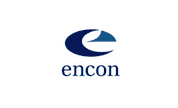





























Flexible benefits plans recognize changes in employee's needs by permitting them to choose their benefit types and allocate their contributions according to their priorities. These plans can also provide benefit options not usually available with traditional plans (e.g. the purchase of vacation days and elder care).
Flexible benefits can also be used as a mechanism for cost control by employers. The employer can define the level of funding (benefit dollars) for the plan each year, rather than having it determined by increases in the premium costs at each renewal. The flex plan can also encourage plan members to choose benefits with cost control features by designing or pricing these benefits attractively.
Employer's contributions are made in the form of flexible credits, also known as flex credits or flex dollars. With these credits, employees purchase benefits that are tailored to their needs and budgets.
Flexible Benefits plans can vary considerably in the amount of choice available to employees. There are five common approaches to setting up a plan:
Benefits are added on to the current (traditional) benefits plan. Employees can increase coverage in certain areas, for example, Optional Life and Optional AD&D, by purchasing more coverage with their flex dollars. Employees may also be able to purchase coverage for benefits not covered by their plan, for example, Critical Illness and Home & Auto Insurance.
Employees are given the choice of purchasing two or more pre-defined plans or modules using their flex credits. The modules vary in their level of protection. The plan can be designed so that employees can further enhance their level of coverage (to a module providing more comprehensive coverage) by contributing towards the cost through payroll deductions.
The current benefit plan is reduced to a basic or core level of benefits that are provided to all employees on a mandatory basis. The core level of coverage usually includes a small amount of life insurance and limited coverage for extended health care and disability insurance. Employees are given flex credits to enhance their core benefits and purchase coverage in areas outside the core plan. If the flex credits are insufficient to purchase the desired level of coverage, employees are usually given the option of purchasing more coverage through payroll deduction. This method of flexible benefit plan design offers more choice to employees than an Add-On or Modular approach.
This type of plan offers the most flexibility. Employees are given the choice of purchasing any combination of benefits from a menu of several benefits. Employees are also given the choice as to the level of coverage within each benefit. Coverage is purchased through flex credits provided by the employer. Coverage can be further enhanced by contributions made by the employee through payroll deduction.
Health Care Spending Accounts are similar to chequing accounts. Amounts are allocated to each employee's account each year and the employee uses the account to pay for health and dental expenses that are not covered under his/her benefit plan, or for deductibles and co-insurance. These accounts can be provided on a stand-alone basis within a traditional benefits plan or as part of a flexible benefits plan. A more detailed description can be found in the section titled Health Care Spending Accounts.
Two important considerations when designing a flexible benefits plan are waivers of coverage and anti-selection:
The decision to implement a flexible benefits plan is a large undertaking and should not be taken lightly. Successful implementation requires significant up-front time and costs. When implementing a plan, the following guidelines are recommended: